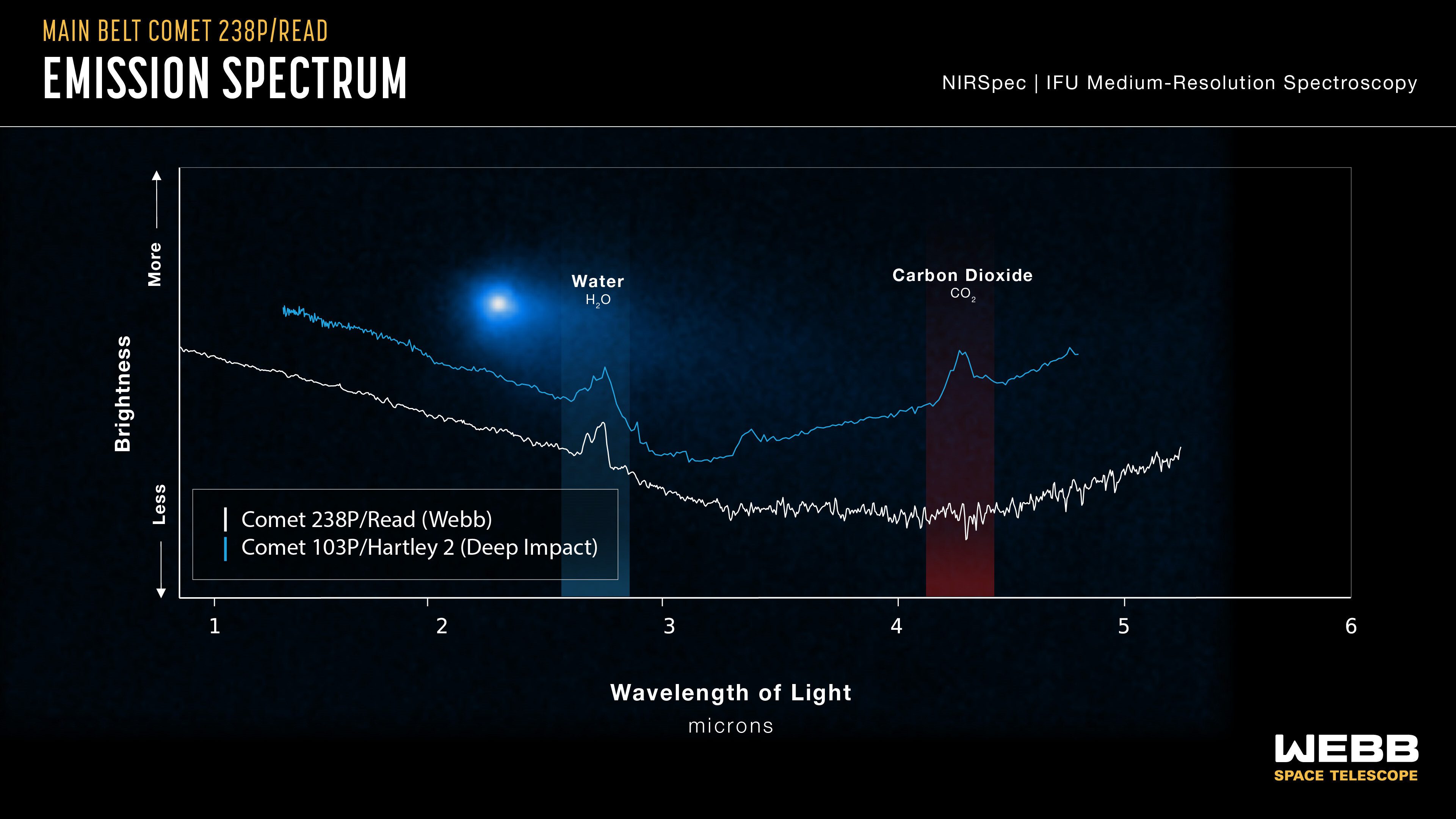Observations of Comet Read in the Main Asteroid Belt have shown for the first time that there is water vapor around this body, confirming without doubt its cometary status. JWST results indicate that primordial water can remain mostly unscathed in the boundary between the inner and outer Solar System, where it’s expected to be too warm for it. But the team was also surprised to see a lack of carbon dioxide in this object.
Carbon dioxide makes up about 10 percent of all volatile material in comets. You can imagine that not finding something this common is raising some eyebrows. Did Comet Read never have it in the first place? Or perhaps it had it and lost it at a faster rate than other comets?
“Being in the asteroid belt for a long time could do it – carbon dioxide vaporises more easily than water ice, and could percolate out over billions of years,” lead author astronomer Michael Kelley of the University of Maryland, said in a statement.
We are not certain where all the water from Earth came from. Our planet formed too close to the Sun to have much water itself, so comets and water-rich asteroids are seen as an interplanetary delivery system, taking ice from the outer regions and bringing it closer to home.
Seeing it preserved in the Main Belt is very positive. This has long been speculated to be the case, with objects that have many characteristics of comets. But without direct detection of water vapor, it was difficult to call a spade a spade. JWST has brought us those undeniable chemical signatures.

Comet Read seen by JWST compared to Comet Hartley 2 visited by the mission Deep Impact.
Image Credit: NASA, ESA, CSA, and J. Olmsted (STScI)
“Our water-soaked world, teeming with life and unique in the universe as far as we know, is something of a mystery – we’re not sure how all this water got here,” co-author Stefanie Milam, JWST Deputy Project Scientist for Planetary Science, explained. “Understanding the history of water distribution in the Solar System will help us to understand other planetary systems, and if they could be on their way to hosting an Earth-like planet.”
But this is only the beginning of this investigation. To better understand this comet and hopefully solve the mystery of the missing carbon dioxide, researchers plan to observe other asteroid belt comets and see how they stack up.
“Do other Main Belt comets also lack carbon dioxide? Either way, it will be exciting to find out,” said co-author astronomer Heidi Hammel of the Association of Universities for Research in Astronomy (AURA).
The study is published in Nature.
Source Link: JWST Finds Water On A Nearby Comet But Surprisingly, Something Is Missing